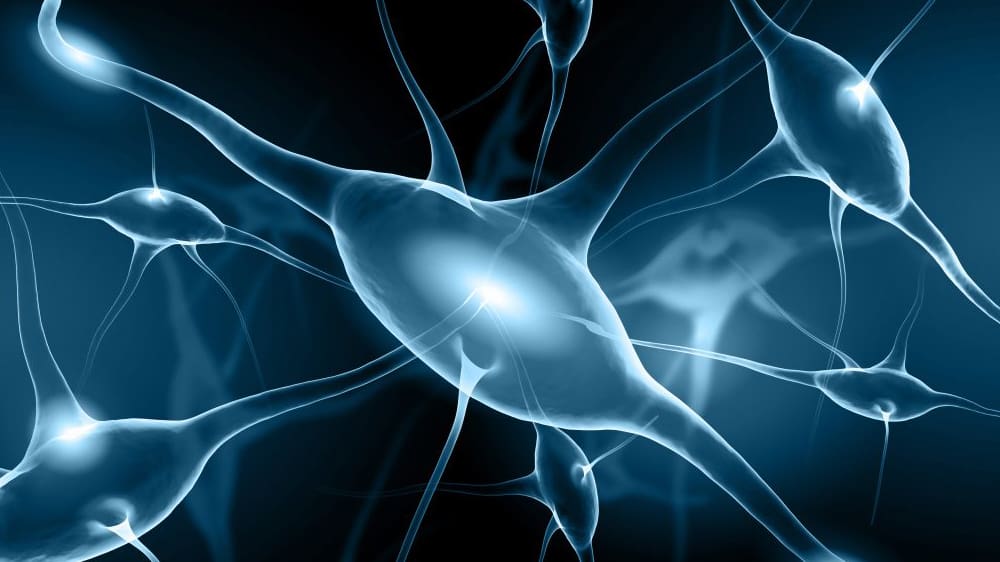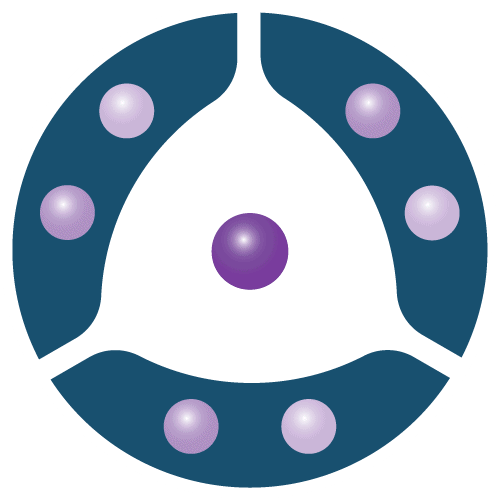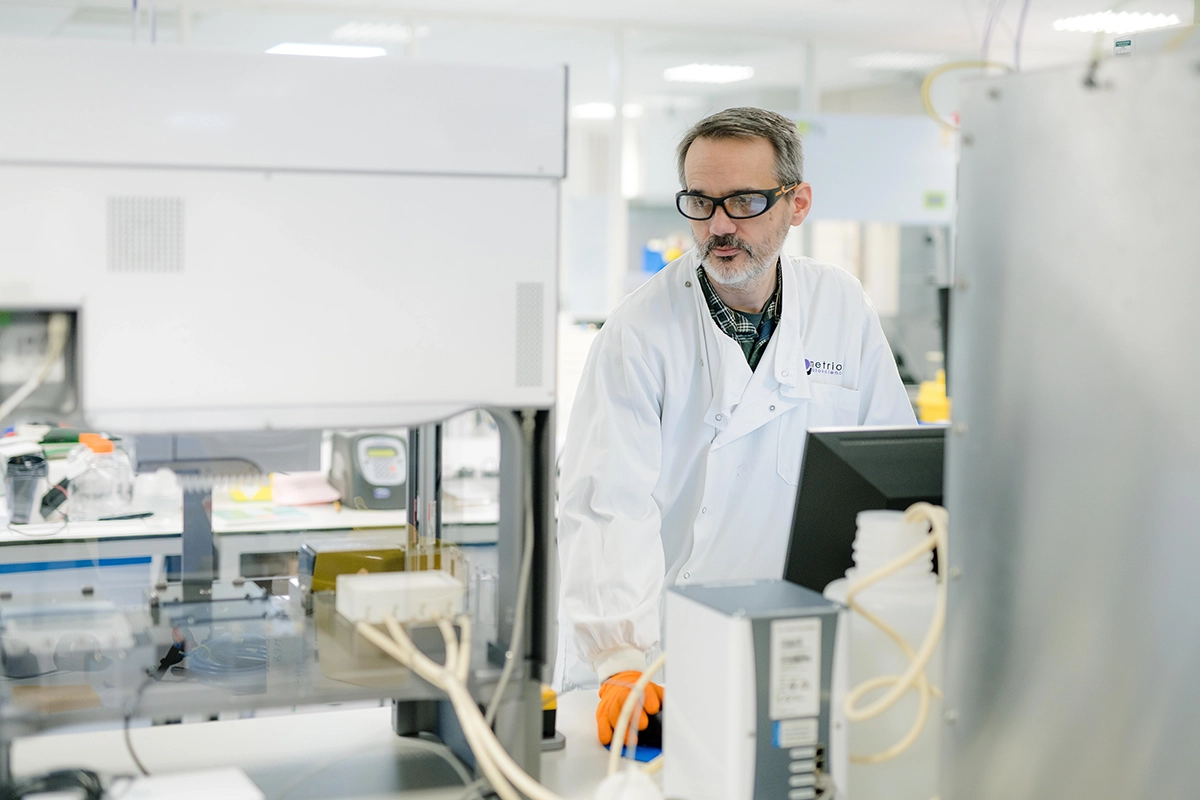

Specialist neuroscience services
Highly specialised and tailored neuronal assays to accelerate your drug discovery research for neurological disorders, including pain
Our specialist team of neuroscientists are experts in their field and can help your biology team generate cell lines for your targets.
With over 150 years’ ion channel drug discovery experience with indications including pain, neurodegeneration, psychiatry and more, we can advance your project to the next milestone.
We are highly experienced in translational assays, providing quality recordings from relevant tissues expressing your target of interest.
We are also experts in the manual patch clamp technique and offer higher-throughput automated patch clamp services.
Panel of models with increasing complexity and translational relevance
Our panel of models allow for more accurate prediction of human responses, reduce the risk of late-stage failures and provide a thorough understanding of drug mechanisms.
- Ion channel cell lines for both central and peripheral nervous system targets
- Primary neuronal cultures, including dissociated cortical, trigeminal or dorsal root ganglion (DRG) neurons from rodents
- CNS drug discovery: Increase the likelihood of successful therapeutic outcomes
- Human iPSC-derived neurons

Range of assay methodologies
A range of assay methodologies is vital in drug discovery because it ensures a thorough evaluation of drug candidates from multiple perspectives. This approach increases the likelihood of identifying effective and safe drugs, reduces the risk of late-stage failures, and supports the overall success of the drug development process. By leveraging diverse assays, researchers can optimize drug candidates, address challenges as they arise, and ultimately bring better therapies to market.
- Manual and automated patch-clamp
- Fluorescence-based assays
- Multi-electrode array (MEA) recordings
- Translational assays: central neuronal firing, peripheral neuronal firing, native ion channels
Our neuroscience assays are used to:
- Investigate the mechanism of action for pre-clinical compounds in early phases of neuroscience research programs
- Confirm compound effects against specific ion channels in native neuronal backgrounds
- Address the neurotoxicity of compounds and assess the effects of compounds on a range of excitability parameters
Heterologous cell lines and integrative assays
Screening of your compounds in a neuroscience setting is primarily driven by the fact that they have been designed to modulate CNS or peripheral nervous system targets and signalling pathways, including but not limited to ion channels. Our neuroscience experts can carry out this screening using heterologous cell lines expressing human or rodent neuronal proteins, as well as offering more integrative assays employing rodent and human cell lines or in acutely cultured native cells from the rodent peripheral and central nervous system.
Selectivity and safety profiling of lead compounds and IND candidates
Get insight to selectivity and safety profiling of lead compounds and IND candidates, either as part of an existing screening cascade or because in vivo testing revealed a neurological signal. We have have developed and validated an industry-standard rat cortical CNS neuron assay that can reliably detect the seizure-inducing liability of a wide range of reference compounds (as well as serve as a model to profile anti-epileptic drugs). We also offer have deep expertise with rodent dorsal root ganglion (DRG) sensory neurons which can be used to assess peripheral neurotoxicity.
Neuroscience screening and toxicity testing reaches the ultimate translational step when it is carried out in human iPSC-derived neurons, and primary cell cultures. The use of differentiated human stem cell-derived neurons also allows the creation of patient-derived and disease-specific translational assays, opening the door onto one of the more exciting aspects of modern drug discovery.
Studying ion channels on the lysosomal membrane
Studying ion channels on the lysosomal membrane is essential for understanding lysosomal function, cellular homeostasis, and the development of various diseases. This research has the potential to uncover new therapeutic targets and improve our knowledge of fundamental cellular processes.
In this video we demonstrate how to perform the lysosomal patch clamp technique to study ion channels on the lysosomal membrane.

Case study:
Multi-assay High-throughput drug repurposing screen:
KCNC1
Eliana is a two-year-old from Canada with a de novo mutation (V434L) in her KCNC1 gene which encodes for the Kv3.1 channel in central nervous system neurons including cerebellar neurons and GABAergic interneurons. The mutation manifests as a variety of neurological disorders which can include myoclonic epilepsy and ataxia due to K+ channel mutation, developmental epileptic encephalopathy (DEE), or hypotonia, depending on the specific variant.
The KCNC1 Foundation collaborated with Perlara, who approached Metrion Biosciences, where manual and automated (Qube) patch-clamp techniques and Fluorescent Imaging Plate Reader (FLIPR) high throughput screens (HTS) against the mutant channel were performed to identify hit compounds.
Neuroscience resources
Case studies
Application notes
Posters
- Metrion Biosciences: high quality ion channel drug discovery service provider. Milner Therapeutics Symposium, Cambridge, 2019
- Development of Native and Stem Cell-Derived Electrophysiological Assays for Neurotoxicology Screening and Translational Drug Discovery. SPS Berlin 2017 poster 142.
- Profiling endogenous sodium channels in the ND7-23 neuroblastoma cell line: implications for use as a heterologous ion channel expression system and native tissue model suitable for automated patch clamp screening. Royal Society for Chemistry Ion Channel Symposium, March 2016.
Flyers
Publications
- The role of Nav1.7 in human nociceptors: insights from human induced pluripotent stem cell-derived sensory neurons of erythromelalgia patients.
- Recent advances in targeting ion channels to treat chronic pain.
- Voltage-clamp and current-clamp recordings from mammalian DRG neurons.
- Multiple sodium channels and their roles in electrogenesis within dorsal root ganglion neurons.
- The role of sodium channels in neuropathic pain.
- A single sodium channel mutation produces hyper- or hypoexcitability in different types of neurons.
Videos
Webinars

Let’s work together
Share your specific ion channel screening requirements and we will put you in touch with our scientific team.
